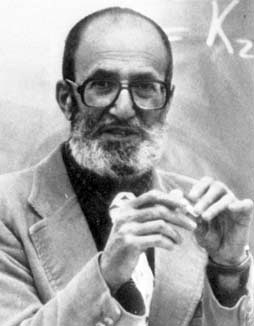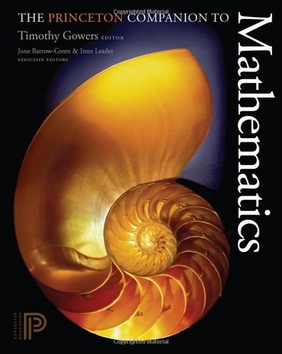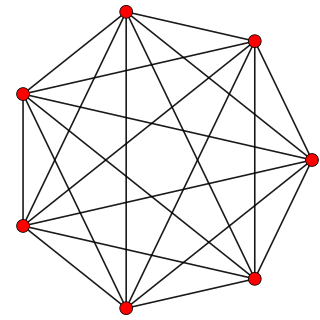Related Research Articles

In geometry, a polyhedron is a three-dimensional shape with flat polygonal faces, straight edges and sharp corners or vertices.
In elementary geometry, a polytope is a geometric object with flat sides (faces). Polytopes are the generalization of three-dimensional polyhedra to any number of dimensions. Polytopes may exist in any general number of dimensions n as an n-dimensional polytope or n-polytope. For example, a two-dimensional polygon is a 2-polytope and a three-dimensional polyhedron is a 3-polytope. In this context, "flat sides" means that the sides of a (k + 1)-polytope consist of k-polytopes that may have (k – 1)-polytopes in common.

Hilbert's problems are 23 problems in mathematics published by German mathematician David Hilbert in 1900. They were all unsolved at the time, and several proved to be very influential for 20th-century mathematics. Hilbert presented ten of the problems at the Paris conference of the International Congress of Mathematicians, speaking on August 8 at the Sorbonne. The complete list of 23 problems was published later, in English translation in 1902 by Mary Frances Winston Newson in the Bulletin of the American Mathematical Society. Earlier publications appeared in Archiv der Mathematik und Physik.
In mathematics, the uniformization theorem states that every simply connected Riemann surface is conformally equivalent to one of three Riemann surfaces: the open unit disk, the complex plane, or the Riemann sphere. The theorem is a generalization of the Riemann mapping theorem from simply connected open subsets of the plane to arbitrary simply connected Riemann surfaces.

Paul Richard Halmos was a Hungarian-born American mathematician and statistician who made fundamental advances in the areas of mathematical logic, probability theory, statistics, operator theory, ergodic theory, and functional analysis. He was also recognized as a great mathematical expositor. He has been described as one of The Martians.
Prime Obsession: Bernhard Riemann and the Greatest Unsolved Problem in Mathematics (2003) is a historical book on mathematics by John Derbyshire, detailing the history of the Riemann hypothesis, named for Bernhard Riemann, and some of its applications.
Popular mathematics is mathematical presentation aimed at a general audience. Sometimes this is in the form of books which require no mathematical background and in other cases it is in the form of expository articles written by professional mathematicians to reach out to others working in different areas.

In seven-dimensional geometry, a 7-polytope is a polytope contained by 6-polytope facets. Each 5-polytope ridge being shared by exactly two 6-polytope facets.

Father Magnus J. Wenninger OSB was an American mathematician who worked on constructing polyhedron models, and wrote the first book on their construction.

In ten-dimensional geometry, a 10-polytope is a 10-dimensional polytope whose boundary consists of 9-polytope facets, exactly two such facets meeting at each 8-polytope ridge.

The Princeton Companion to Mathematics is a book providing an extensive overview of mathematics that was published in 2008 by Princeton University Press. Edited by Timothy Gowers with associate editors June Barrow-Green and Imre Leader, it has been noted for the high caliber of its contributors. The book was the 2011 winner of the Euler Book Prize of the Mathematical Association of America, given annually to "an outstanding book about mathematics".

Jeremy John Gray is an English mathematician primarily interested in the history of mathematics.

In six-dimensional geometry, a six-dimensional polytope or 6-polytope is a polytope, bounded by 5-polytope facets.

Richard Sheldon Palais is an American mathematician working in differential geometry.
Siobhan Roberts is a Canadian science journalist, biographer, and historian of mathematics.
The Beckenbach Book Prize, formerly known as the Mathematical Association of America Book Prize, is awarded to authors of distinguished, innovative books that have been published by the Mathematical Association of America (MAA). The prize, named in honor of Edwin F. Beckenbach, was established in 1983 and first awarded in 1985. The award is $2500 for the honored author and is awarded on an irregular basis. In January 1985 Charles Robert Hadlock was awarded the MAA Book Prize, which later in 1985 became the Beckenbach Book Prize.
Benjamin Hart Yandell was an American author, known as the posthumous winner of the 2008 Euler Book Prize.
David S. Richeson is an American mathematician whose interests include the topology of dynamical systems, recreational mathematics, and the history of mathematics. He is a professor of mathematics at Dickinson College, where he holds the John J. & Ann Curley Faculty Chair in the Liberal Arts.
Euler's Gem: The Polyhedron Formula and the Birth of Topology is a book on the formula for the Euler characteristic of convex polyhedra and its connections to the history of topology. It was written by David Richeson and published in 2008 by the Princeton University Press, with a paperback edition in 2012. It won the 2010 Euler Book Prize of the Mathematical Association of America.
Adventures Among the Toroids: A study of orientable polyhedra with regular faces is a book on toroidal polyhedra that have regular polygons as their faces. It was written, hand-lettered, and illustrated by mathematician Bonnie Stewart, and self-published under the imprint "Number One Tall Search Book" in 1970. Stewart put out a second edition, again hand-lettered and self-published, in 1980. Although out of print, the Basic Library List Committee of the Mathematical Association of America has recommended its inclusion in undergraduate mathematics libraries.
References
- 1 2 3 4 5 6 7 8 9 Euler Book Prize.
- 1 2 Siegel, Martha J. (February 2007), "JMM 2007: Report of the MAA Secretary" (PDF), Focus, Mathematical Association of America: 8–10, archived from the original (PDF) on 2012-10-02, retrieved 2011-02-02.
- ↑ Gowers, Timothy (October 9, 2003), "Prime time for mathematics", Nature , 425 (562), doi: 10.1038/425562a .
- ↑ Euler Prize citation Archived 2007-02-09 at the Wayback Machine , MAA, 2007, retrieved 2011-02-01.
- ↑ Derbyshire, John (January 8, 2007), "Big Easy", National Review .
- ↑ Euler prize citation for Yandell, MAA, 2008, retrieved 2011-02-01.
- ↑ Ellenberg, Jordan (September 6, 2006), "Symmetry in Motion", The Washington Post .
- ↑ January 2009 Prizes and Award Archived 2012-10-04 at the Wayback Machine , Mathematical Association of America, retrieved 2011-02-01.
- ↑ January 2010 Prizes and Awards, American Mathematical Society, retrieved 2011-02-01.
- ↑ January 2011 Prizes and Awards, American Mathematical Society, retrieved 2011-02-01.
- ↑ Prize Booklet 2017, page 10
- ↑ Laureate 2017
- ↑ JMM Prizebook 2019
- ↑ JMM Prizebook 2021